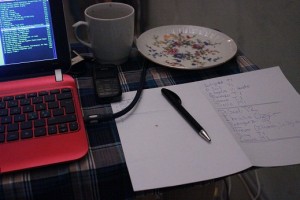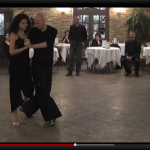Teaching five workshops in tango and musicality in the beautiful Art Gallery.
FB event
Tango
DJing at Nekrasova, Minsk
Dasha and her collegues transformed a sportshall into a cozy milonga. Well done!
The dancers liked my Ibrahim Özgür tanda a lot.

Tango, musicality, and CI

Relaxing at Shantambala, Odessa after 7 months of teaching at Crimea Contact Quest, Meganom, Shantambala Jamfest, Moldova CI+tango festival and giving workshops in Minsk, Milano, Riga, Paris, Amsterdam, London, L’viv, Ushgorod, and Moscow. Thanks to everyone who organised and everyone who participated. See you next at the 2. contact tango festival in Wuppertal (Nov 6th to 10th)
Tango and musicality @ Hola Dance studio, Odessa, Ukraine
Teaching tango and musicality with Irina Suomka Mykhaylyuk. Обучение танго и музыкальность с Ириной.
Hola Dance studio is an interesting place. Full of raw,youthful, artistic energy.
Tango show @ Cafe Шарлотка, Odessa, Ukraine
Show together with Irina Suomka Mykhaylyuk
Tango and musicality @ Piano Café, Kiev, Ukraine
Tango technique – five fundamental principles of movement
Since 2010, I have been researching 1. what are the fundamental principles for movement used in tango and 2. how can these techniques be taught to contact improv dancers and contemporary dancers in a way that enables them to use them in their own dance, rather than in a way that simply teaches them tango. In other words, I have researched what are the dance techniques underlying the tango movement vocabulary and how can these techniques be used in CI or contemporary.
Here are some of the principles for movement, I have formulated so far:
1. Relating centre and floor: leaders can move their centre (whether they use the belly or the chest centre) by pressing the floor in different ways with their feet. This makes the movement grounded and strong.
2. Well defined impulses: Clarity of leader’s impulses comes from quick and well defined shifts in the centres position, not from the size of the shifts.
3. Relating axis and loose leg: the more stable followers can be in the axis of their standing leg, the more relaxed they can be in their loose leg.
4. Relating leaders centre and followers loose leg: ganchos, back cross, projections, volcadas, and many other tango moves are all lead the follower expressing the movement of the leaders centre with her free leg.
5. Separating turns and changes of axis: It is important to separate the lead of pivots from the lead of changing axis. If the follower at the end of a turn is not in her axis, she will fall into a step, limiting the movement possibilities after the turn.
6. Relaxed structure: Finding relaxed structure in the body gives a stability that is not tense together with a relaxation that is not collapsed. Stability and support in the body becomes a question of relaxing by not following unnecessary impulses for movements. This allows movements to be both 100% relaxed and 100% controlled.
Shot tango video with Josefine Pallavicini
Did a video with Josefine Pallavicini to illustrate the theme of the musicality workshops. The video was shot in on of the new dance studios at M2 tango in Copenhagen just before the opening. This tango school is a pleasure to visit. It has a friendly atmosphere and a highly aesthetic interior designs.
Shot tango video with Camilla Fjelhaug
Shot a video with Camilla Fjeldhaug to illustrate the theme of the musicality workshops. Teaching musicality is a challenge in it-self. Communicating what one wishes to teach relating to musicality is another challenge. A show don’t tell approach seemed appropriate.
The video was shot in Energiværkstedet. A space used for meditation and spiritual work and twice a month for a milonga hosted by Camilla. It is beautiful and inspiring and it is situated in the world famous part of Copenhagen, Christiania.
Teaching at Tango Differente @ Ponderosa, Stoltzenhagen (near Berlin), Germany

Picture by Martin B. Aires
Tango Differente at Ponderosa was a full week of teaching and exchanging ways of blending tango with other movement practices. Many participants worked with tango and contact improvisation. In my own teaching, I summarized both my own research and what I saw of others research during this week as two distinct ways of merging tango and CI. 1) By moving smoothly from typical tango patterns to typical CI patterns and back. E.g. starting in caminata, going to the floor into rolling and surfing, and going back up to caminata 2) By taking the techniques for leading and following used in tango and using them in a CI jam setting. E.g. using the principle of the sacada (one person moving into the space another person leaves) and allowing one person to move in a variety of ways other than stepping – including doing floor work.


